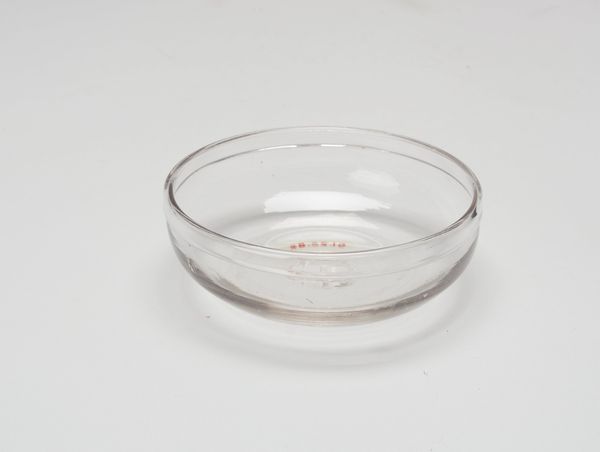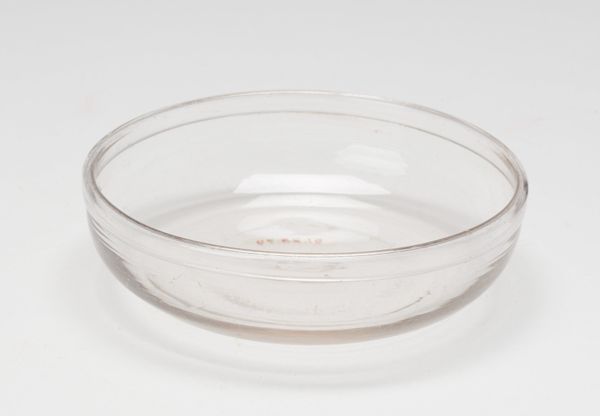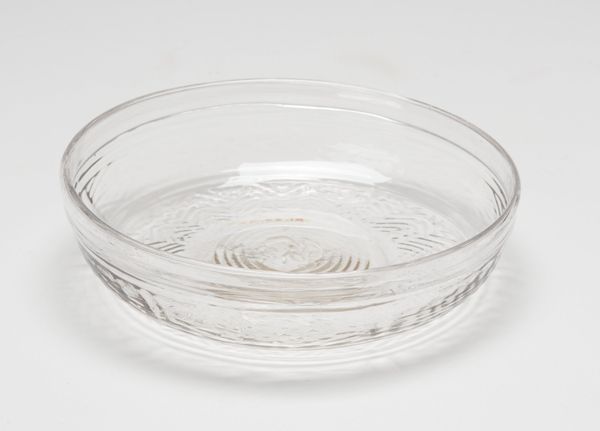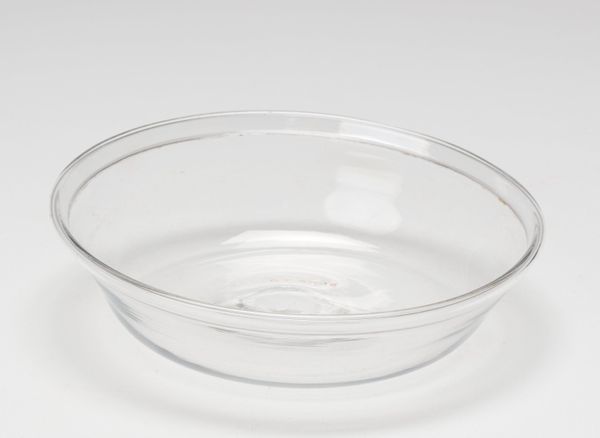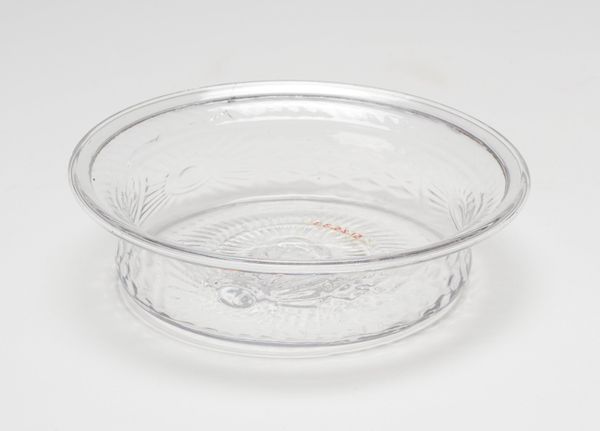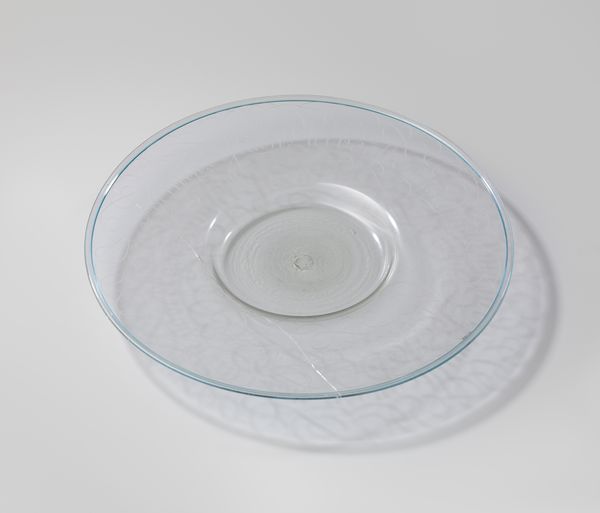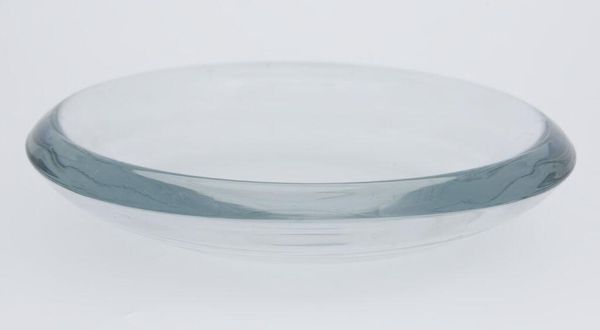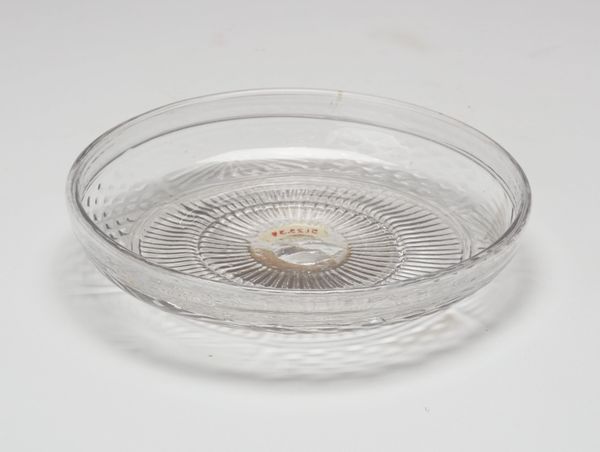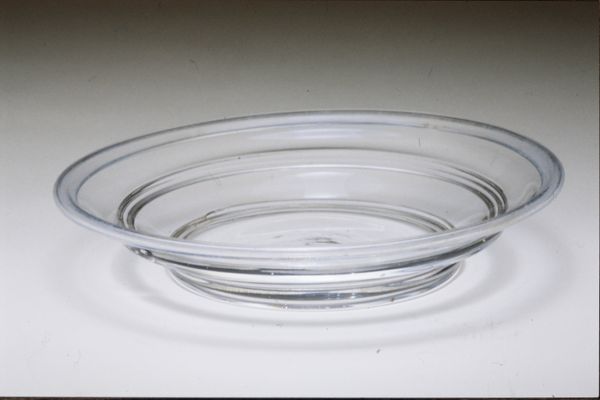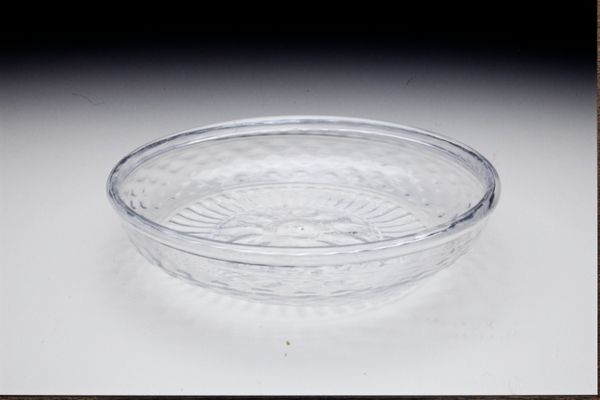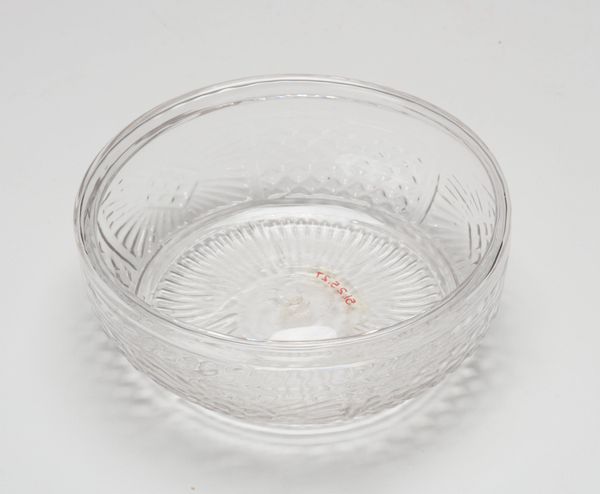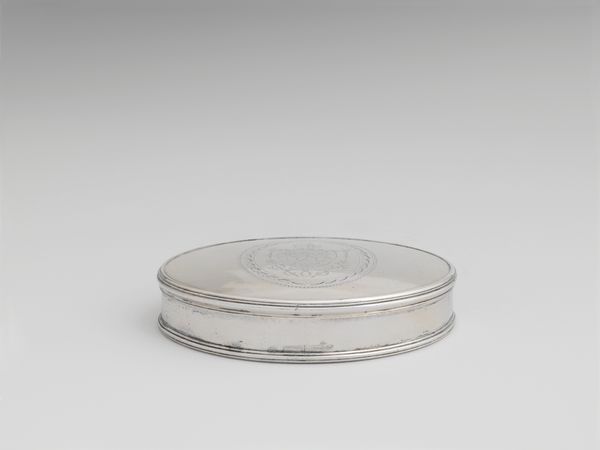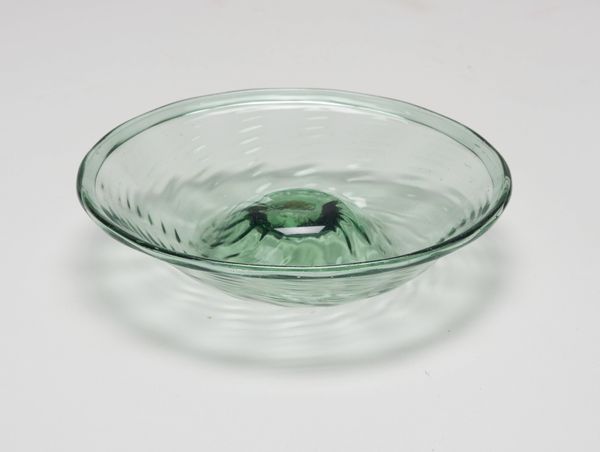
ceramic, glass
#
ceramic
#
glass
#
ceramic
Dimensions: 1 1/2 x 4 x 4in. (3.8 x 10.2 x 10.2cm)
Copyright: Public Domain
Curator: The object before us, simply titled "Bowl," comes from an anonymous artist and is dated to the 18th or 19th century. You can find this humble ceramic and glass creation here at the Minneapolis Institute of Art. Editor: It’s unassuming, isn't it? Just a plain, transparent bowl. Almost ghostly in its simplicity. There's a certain quiet elegance, but mostly it strikes me as remarkably ordinary. Curator: "Ordinary" is an interesting starting point. Glass bowls, especially those of apparent simplicity, weren't always so common. Think about the social history bound up in such a utilitarian object. Its mere existence hints at established trade routes, access to certain resources… Editor: Precisely! And to the skills necessary for glassblowing. Was this mass produced, or crafted by an individual artisan? Was it intended for the elite or wider society? The clarity of the glass, even with its imperfections, implies a level of technical skill and perhaps certain capitalist conditions to access resources like specific sands or the specialized knowledge to fire the glass. Curator: What is truly curious to me, even, is the fact that despite the clean lines, you perceive a kind of… spectrality. Vessels often symbolize emptiness and receptivity in dreams and folklore, a void waiting to be filled with meaning or substance. This simple bowl might hold immense symbolism regarding domesticity or gender. Editor: You're diving into symbolism, and that's great! But let's not forget the pure materiality. Look closely—what's *in* the glass? Are those bubbles, imperfections, or perhaps trace minerals? Each anomaly tells a story of its production. Where did the raw materials come from? And how might the manufacturing have changed our relationship with serving meals, perhaps, or even simply, storage? Curator: Absolutely. Though in itself, there is that fascinating dual potentiality of containing versus remaining empty. Reflecting light while offering transparency, and that to me reflects core philosophical tensions about the human condition and human psychology itself. Editor: In other words, even an seemingly ‘ordinary’ bowl becomes a testament to human labor, innovation, trade and ultimately… survival, even today! Thanks for expanding on that point. Curator: Thanks to you too. An unexpectedly layered and thought-provoking piece.
Comments
No comments
Be the first to comment and join the conversation on the ultimate creative platform.
